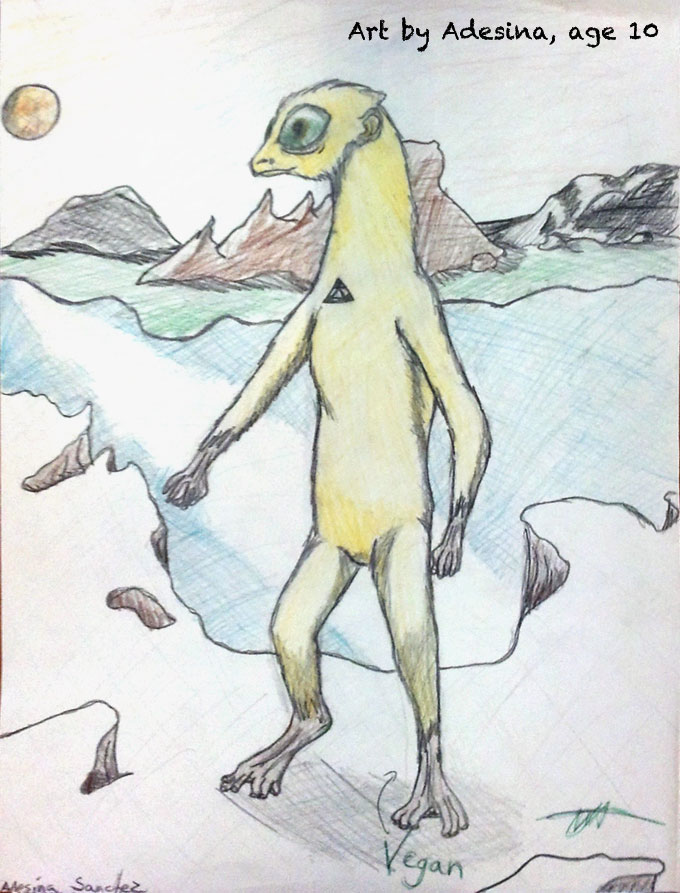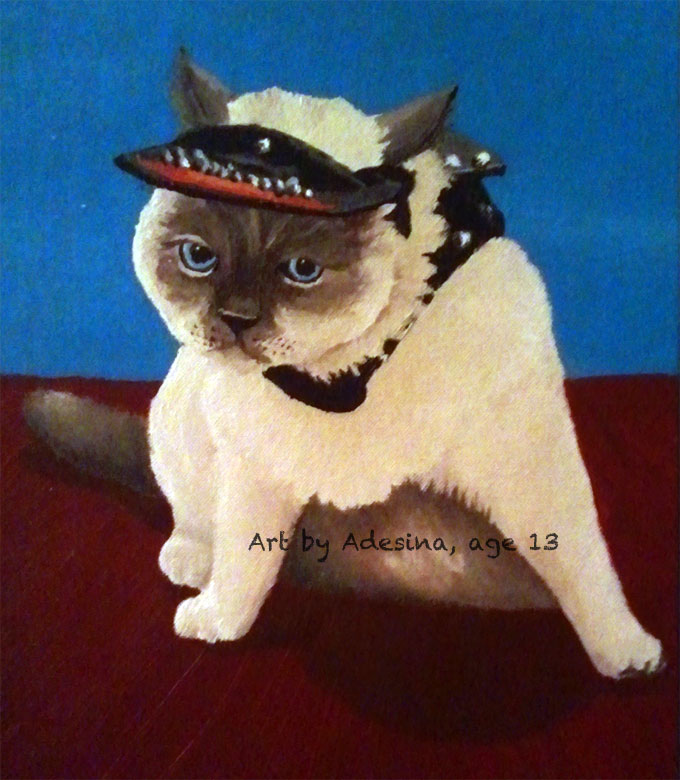I learned to love art at a very young age. When I was only 18 months old, my father taught me to move past stick figures, teaching me to draw animals with fully fleshed bodies, arms and legs. I was hooked, and drawing has been a favorite pastime ever since.
Later on my parents taught me to read and write, introduced me to math, and encouraged me to explore the natural world with magnifying lenses and litmus papers. Clearly I have a lot to thank my parents for — there is an obvious correlation between parental involvement in a child’s education, and the academic success of the child.
 What is often overlooked however, is the connection between academics and art. While my father taught me to draw, and my mother taught me to play piano, it wasn’t long before the schools I attended made it clear that the arts were not a priority – to the point where in high school, there were no formal art classes available past Freshman year. And when I voiced my disappointment, school administrators reminded me that with my good grades, I had a chance at an Ivy League education and shouldn’t waste time on art. As if my being at the head of the class was in spite of, and not at all due to, a childhood spent holed up in my room drawing and painting in my spare time.
What is often overlooked however, is the connection between academics and art. While my father taught me to draw, and my mother taught me to play piano, it wasn’t long before the schools I attended made it clear that the arts were not a priority – to the point where in high school, there were no formal art classes available past Freshman year. And when I voiced my disappointment, school administrators reminded me that with my good grades, I had a chance at an Ivy League education and shouldn’t waste time on art. As if my being at the head of the class was in spite of, and not at all due to, a childhood spent holed up in my room drawing and painting in my spare time.
But what if that wasn’t so? What if each drawing I made, carefully observed from the world around me, was actually a math problem in disguise? What if the careful selection of color and texture, was no less than an attempt to create a language more descriptive than the English, Spanish, or even the Latin that filled our textbooks? What if the wild ideas I illustrated on paper – monsters, comic strips, caricatures – were in fact an extension of the creative writing processes begun in the classroom? What if the arts were not antithetical to academics, but an integral part of them?
 I am not formally trained in these matters. I don’t have a degree in childhood education, and the classes I teach don’t venture outside the explicit realm of visual art. However I was a child once, and when I was, I knew how to learn: quickly, easily, and in such a way that the information was both fully understood, and fairly permanently retained. Nowadays, I can still do quadratic equations with ease, yet some adults I know can’t even remember how to properly add fractions with unlike denominators! Clearly there was a difference in how we learned and retained information. But what was it, and how did it come about?
I am not formally trained in these matters. I don’t have a degree in childhood education, and the classes I teach don’t venture outside the explicit realm of visual art. However I was a child once, and when I was, I knew how to learn: quickly, easily, and in such a way that the information was both fully understood, and fairly permanently retained. Nowadays, I can still do quadratic equations with ease, yet some adults I know can’t even remember how to properly add fractions with unlike denominators! Clearly there was a difference in how we learned and retained information. But what was it, and how did it come about?
So recently I got to thinking about my babyhood years: my father patiently by my side, crayons in hand. He showed me, not just how to draw, but really, how to SEE, and then to REMEMBER what I had seen, long enough to put it on paper. What a concept for an 18 month old! Who can tell what an impact that early art education had on a young, developing mind? Might being taught to think visually & spatially early on, lead to academic achievement later in life?
 There are already studies showing causality between high spatial visualization skills and problem-solving abilities in physics 1, and others pointing out how music training helps children process language 2, 3. So why is that when it’s time to tighten our belts, the first thing to go in schools is the arts program? And then we wonder why our children are failing!
There are already studies showing causality between high spatial visualization skills and problem-solving abilities in physics 1, and others pointing out how music training helps children process language 2, 3. So why is that when it’s time to tighten our belts, the first thing to go in schools is the arts program? And then we wonder why our children are failing!
Today, when I teach kids how to draw: when I show them the proportions of the face, or ask them to follow the line of my pencil as it traces the complex outlines of a still life, I’m not just doing it to make little modern-day DaVinci’s out of them. I teach these kids how to draw; how to see and remember, because the skill set they are developing is universally applicable: The intense attention to detail, and the thought processes involved in transferring those details from a 3D plane to a 2D piece of paper, are excellent practice for things like the careful collection of data necessary in the scientific method, and the transfer of the literal meanings of literary passages, to the larger metaphoric meanings they reference.
Kids need to learn how to carefully observe, and then they need to learn how to retain, apply, and RECONFIGURE what they have observed: in science, in math, in literature, and in life. And learning how to draw is an excellent introduction to this process. It trains the brain.
 With the present ever-increasing infringement upon children’s arts education, I really hope that we can start to make changes in how we prioritize the arts in public schools and in the home. I hope there are more studies, more research, more interest in the arts and in how learning art and music affects the development of young minds. I hope that when it comes time to cut the fat, it’s the antiquated ideas that go, and the art classes that stay. I hope that teachers of all academic subjects begin to learn ways to incorporate the arts into their own lesson plans to make learning easier and more comprehensive. And I hope that parents recognize that a child obsessed with the creative process is a good thing, to be encouraged at any age.
With the present ever-increasing infringement upon children’s arts education, I really hope that we can start to make changes in how we prioritize the arts in public schools and in the home. I hope there are more studies, more research, more interest in the arts and in how learning art and music affects the development of young minds. I hope that when it comes time to cut the fat, it’s the antiquated ideas that go, and the art classes that stay. I hope that teachers of all academic subjects begin to learn ways to incorporate the arts into their own lesson plans to make learning easier and more comprehensive. And I hope that parents recognize that a child obsessed with the creative process is a good thing, to be encouraged at any age.
I can’t quantify for certain how much of a difference art has made for me in seemingly unrelated areas of endeavor, but I can say this: I grew up in the Bronx – at the time, the poorest congressional district in the United States. I went to public school, and I am a minority to boot, and female. Yet I LOVED math and science, and aced the SAT’s …And, I was taught to draw when I was just a baby. Coincidence? Perhaps, but this is one brown-skinned girl from the ‘hood, who was able to buck the trends, paintbrush in hand.
And isn’t it every child’s right, to at least be given the opportunity to do the same?
Thanks for reading,
Adesina xoxo
PS,
Please check out some of my favorite National & Local Children’s Arts Programs below:
Artistic Dreams International
Project Sunshine
City Kids
Free Arts NYC